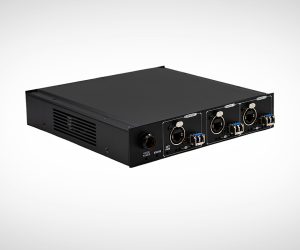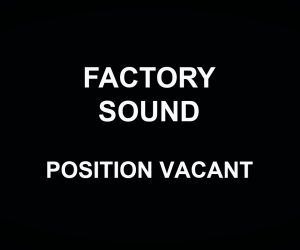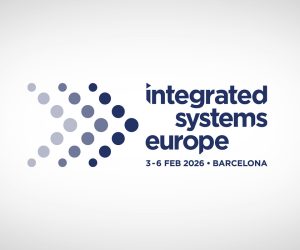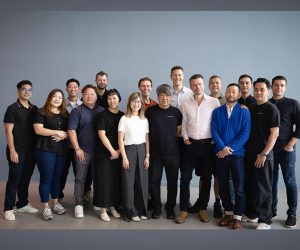
Merivale: Extreme Hospitality
Merivale’s Technical Manager, Glenn Rayner, explains how he keeps 20+ Sydney venues singing.
Text:/ Christopher Holder
Merivale is a large, fast-growing hospitality business with a clutch of high-profile pubs, bars and restaurants, mostly in and around Sydney’s CBD. The business is run by Justin Hemmes, scion of a storied family business that has its roots in his parents’ Australian rag trade label from the ’60s. Justin made his own mark with the Slip Inn, a Sydney Olympics favourite and famously the venue where a certain Mary McDonald met her Danish prince charming.
After launching The Establishment and Ivy, Merivale really found its groove. Now it seems that its momentum is irresistible and its Midas touch infallible. Coogee Pavilion and The Paddington are a couple of recent high-profile additions to the portfolio and, this year, The Newport joins the stable.
In every case, the venue is at the receiving end of some serious Merivale love. Justin maintains a close coterie of confidants that take care of the refit. Part of that inner sanctum is Technical Manager Glenn Rayner.
The AV, and audio in particular, is taken very seriously by Justin. It’s easy to think that Merivale has a ‘no expense spared’ approach to its fitouts and audio is just another line item. Not so, Justin Hemmes takes a very personal and hands-on interest in the audio, seeing it as a key plank in the fully-immersive experience he wants each and every patron to have, regardless of who they are and where they are in the venue. When it comes to audio, Justin Hemmes means business.
THE NEWPORT
Formerly the Newport Arms, Merivale’s The Newport is a big North Shore pub that looks out over Pittwater. Merivale hasn’t finished refitting The Newport but started with the not inconsiderable task of completely reimagining the alfresco area. The Newport’s outdoor area puts every other pub’s beer gardens to shame. It’s enormous and the food and beverage options are extensive.
Glenn Rayner: We looked at the existing audio at The Newport and quickly established that the only way we’d get the sort of clarity and coverage we required was to have lots of speakers.
The initial design spec’ed 220 loudspeakers. We pared it back down to 180. Regardless, it’s an enormous installation. The design process took months.
We went with the Martin Audio CCD loudspeakers. We conducted a shootout between Martin, Meyer, JBL and another brand, and Martin, with the new range, really shone.
All up, it’s a Martin and QSC solution.
The design process was crucial. When you’re dealing with long cable runs, like we are at The Newport, you need to make sure you’ve got the right cabling. And when it’s fitted off, that the terminations are done properly — you can’t afford any signal degradation. Being meticulous in the planning also helps with the co-ordination of contractors and maintaining good communications.
For The Newport we did leave ourselves some wriggle room. We pre-laid cable everywhere to be ready for any eventuality. We were fortunate to have that luxury. Saying that, we did use roughly 90% of the cables we pulled through and it gave us extra control and flexibility.
CONTACTS
Technical Audio Group (Martin Audio, QSC, Allen & Heath): (02) 9519 0900 or www.tag.com.au
Customised Technical Solutions: (02) 8068 7684 or www.custechsol.com.au
AT Controls (AMX Provider): www.atcontrols.com.au

MERIVALE AUDIO PHILOSOPHY
No Dead Spots: this is the Justin Hemmes mantra when it comes to Merivale audio. Justin takes a keen personal interest in the music (which is programmed and supplied by playlist specialists Nightlife) and audio and as a result it needs to be factored into any renovation from an early stage.
Most large venue installations will use constant voltage amp and loudspeaker systems. The advantage of such a setup is obvious: you can daisychain speakers, making it easy to install and far more cost effective — one amp channel for multiple speakers; one cable for multiple speakers. The downside is a serious lack of granular/zone control and no one’s going to enjoy any stereo imaging. And here’s why the likes of The Newport has walls of amps and processing.
Having no dead spots also means there aren’t any ‘hot spots’ where certain speakers are run harder to attain coverage. In fact, The Newport coverage is as even as you’re ever likely to hear. It doesn’t matter where you sit — at a bar, at a table, on a retaining wall, in the garden — you’ll enjoy a full and immersive stereo sound. It’s really quite extraordinary.
The Martin Audio CCD loudspeakers won the ‘shootout’ prior to installation. The Martin CDD coaxial loudspeaker design is well suited to hospitality installs such as this. Because it’s coaxial you can install the speaker in a landscape or portrait orientation and you maintain the same highly coherent sound quality. What’s more, the dispersion pattern of the Martin CDD design is intentionally non-symmetrical. It means there’s a wider dispersion pattern for those close to the speaker (say, around 120°) and narrower for those more distant (~80°). The advantage of such an approach is a more consistent delivery of HF, regardless of the listening distance.
144 AMP CHANNELS
Glenn Rayner: Our amp rooms have 38 four-channel QSC amps — 144 channels all up. There are no more than three speakers per channel, and mostly it’s one or two. The zone control you get from working this way is far superior. We can customise the feel of every part of the venue, to make it absolutely perfect.
Across every output and group of speakers we have EQ, compression, delay, HPF, LPF… DSP on every output — we’re not limited in any way. It means we can walk the venue with a wi-fi device and fine tune settings for every set of speakers. It took weeks to get right and even now I’ll be there at least once a month to make sure it’s all working optimally.
We use Q-SYS for the audio processing at The Newport and AMX as our control system/user interface.
Q-SYS is the perfect system for us given the remoteness of The Newport from the rest of our more city-based venues south of the harbour. We’ll use Q-SYS to tell us when there’s an issue with the system: if a speaker’s not working or if any amp channel has failed, then Q-SYS will email us. Again, that saves us an enormous amount of maintenance time.
RAISING STANDARDISATIONS
Glenn Rayner: The longer I’ve been at Merivale and the busier we get — opening multiple venues each year — the more I rely on standardisation. Standardising the build across the group makes it so much easier. It means I can pull out the documentation from the last job, make some adjustments and roll it out again. It allows me to work more quickly and servicing the systems is much easier. What’s more, the team is familiar with every venue’s AV, regardless.
We began standardising our AV around five years ago. It started when we did the rebuild of The Establishment, then the new build of the Coogee Pavilion, The Paddington, and now The Newport… all those venues got similar fitouts — the processing and the design and the way the systems are structured are all similar.
This includes our control systems. We use the same AMX control system across the group. Each venue has its own system but each has the same code and the same layout as everywhere else. It means the cost of rolling out a new system is comparatively affordable — we have the code and we make small venue-by-venue adjustments. The other key benefit is for our managers: it’s straightforward for them to use the system and simple for them to switch venues and know what to expect.
We’ve used BSS as a standard for our processing and we’ll continue to use BSS but for The Newport, given its remote location and the scale of the job, it was going to be a lot quicker to roll out the QSC solution, both with its amps and DSP, and that’s why we went with that product — roll it out quickly, achieve want we needed and it gave us the remote access capabilities we required. The capabilities of Q-SYS are staggering, but it’s also about using the right tools for the job. Our most recent project, Fred’s and Charlie Parker’s, is a small project and we’ve got a couple of BSS London BLU processors and nine amps in there. That job doesn’t need Q-SYS.
THE NEWPORT’S GARDEN STAGE
The Newport garden features a fully-fledged performance stage. The audio comprises eight Martin MLA Mini elements a side, with two MLA Mini subs a side. Each MLA box is bi-amped and individually addressed by a QSC amp channel (some 40 channels of amplification are devoted to the stage alone). The array is beam steered down to constrain the throw to around 25m.
Live music is a regular weekend fixture at The Newport. A rack has been prepared that’s easily wheeled to side of stage and with a single Cat5 connection plugged into the system. Onboard is an Allen&Heath Qu16 digital mixer, along with a handful of wireless mic channels. The beauty of the approach is the venue is totally self sufficient for the vast majority of events — no need to hire in a PA and/or operator — and the ‘one-connection’
setup preconfigures the rest of the venue’s loudspeaker zones to accommodate the live performance. The remaining 180-odd loudspeakers throughout the rest of the venue are time-delayed, using the stage PA as ‘time zero’.
Glenn Rayner: The stage was interesting. We wanted to do something that not only sounded great but looked the part. The Martin Audio line array certainly looks like its meant to be there and looks a lot like a festival stage — the sound and lighting have a festival look. That’s what we were going for.


POWER & RESPONSIBILITY
Two QSC Q-SYS Core 1100s (one for backup/redundancy purposes) run the show. Out of the Core the digital audio is routed via category cable to Hewlett Packard IT switches which in turn direct traffic to the networked QSC CXD Q Network amplifiers. The degree of control and monitoring is advanced. Glenn Rayner can log into the Q-SYS Core, take a bird’s eye view of the system and indeed use a mouse to hover over any point and ‘hear’ the audio at that node. This makes troubleshooting highly-manageable for such a large audio network. If something’s disconnected or a component is blown the Q-SYS Core will notify you.
Customised Technical Solutions, under the watchful gaze of Tyson Nieplet, took care of the installation and its rack work is meticulous, ensuring the system is just as easy to work with on Day 5000 as it is on Day 1.
DAILY ROUTINE
Glenn Rayner: Merivale runs an AV help desk, much like a traditional IT help desk. And we’ve got an automated ticketing system where it logs the jobs and assigns it to the appropriate technician. I’d say 60-70% of our time is spent dealing with those types of call outs. The rest of time is spent taking care of the ongoing maintenance schedule.
Depending on the size of the venue we’ll routinely check the AV on a monthly or quarterly basis. We also maintain roughly 200 pieces of DJ equipment across the group. Every piece gets checked weekly, because of the abuse it cops. Huge resources are put into maintaining properly functioning AV.
IPTV FUTURE BECKONS
Glenn Rayner: Looking to the future, I can see us doing more with IPTV across all our venues. I’m looking forward to having streamed media available all the time, anywhere. It’s something we have in a more modest way but I can see it being widespread when it’s more cost effective and simpler to use — that’ll be a great day.
But you can never get too cosy at Merivale. [Merivale boss] Justin Hemmes is an incredibly interesting man, with the sort of foresight I’ve not seen in anyone else, and you don’t know what he’s thinking next.
We’re expanding at an incredible rate and from a professional point of view, it’s really exciting to be part of that expansion. Justin relies on his AV being right, and to be a part of that, and have input into how and what we do, is really satisfying.















RESPONSES